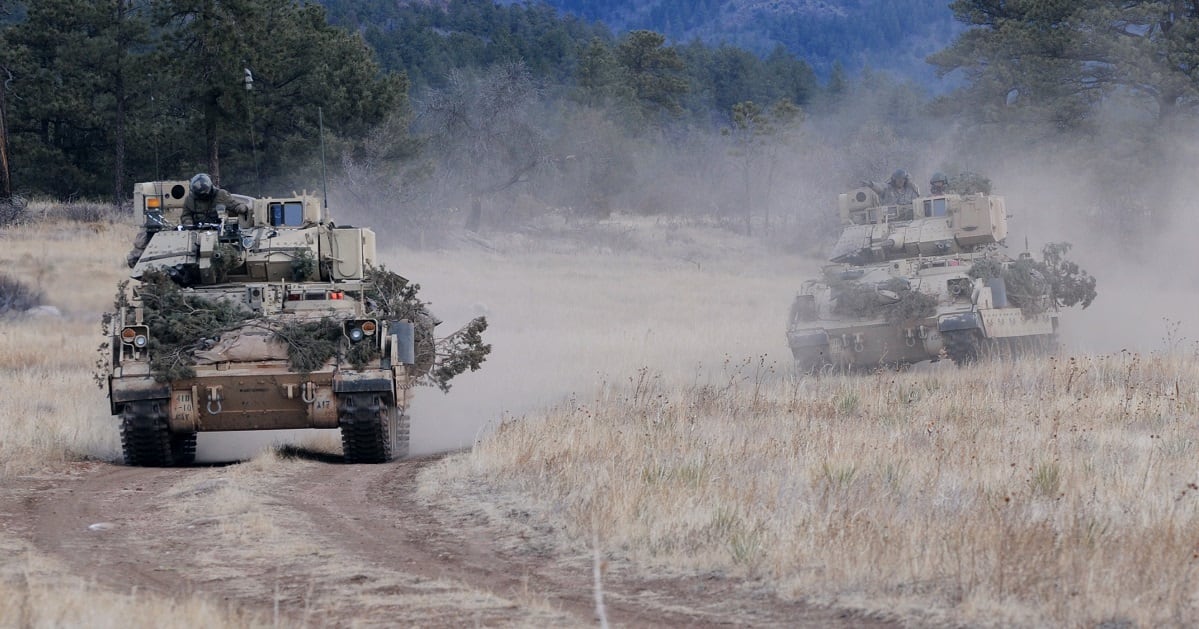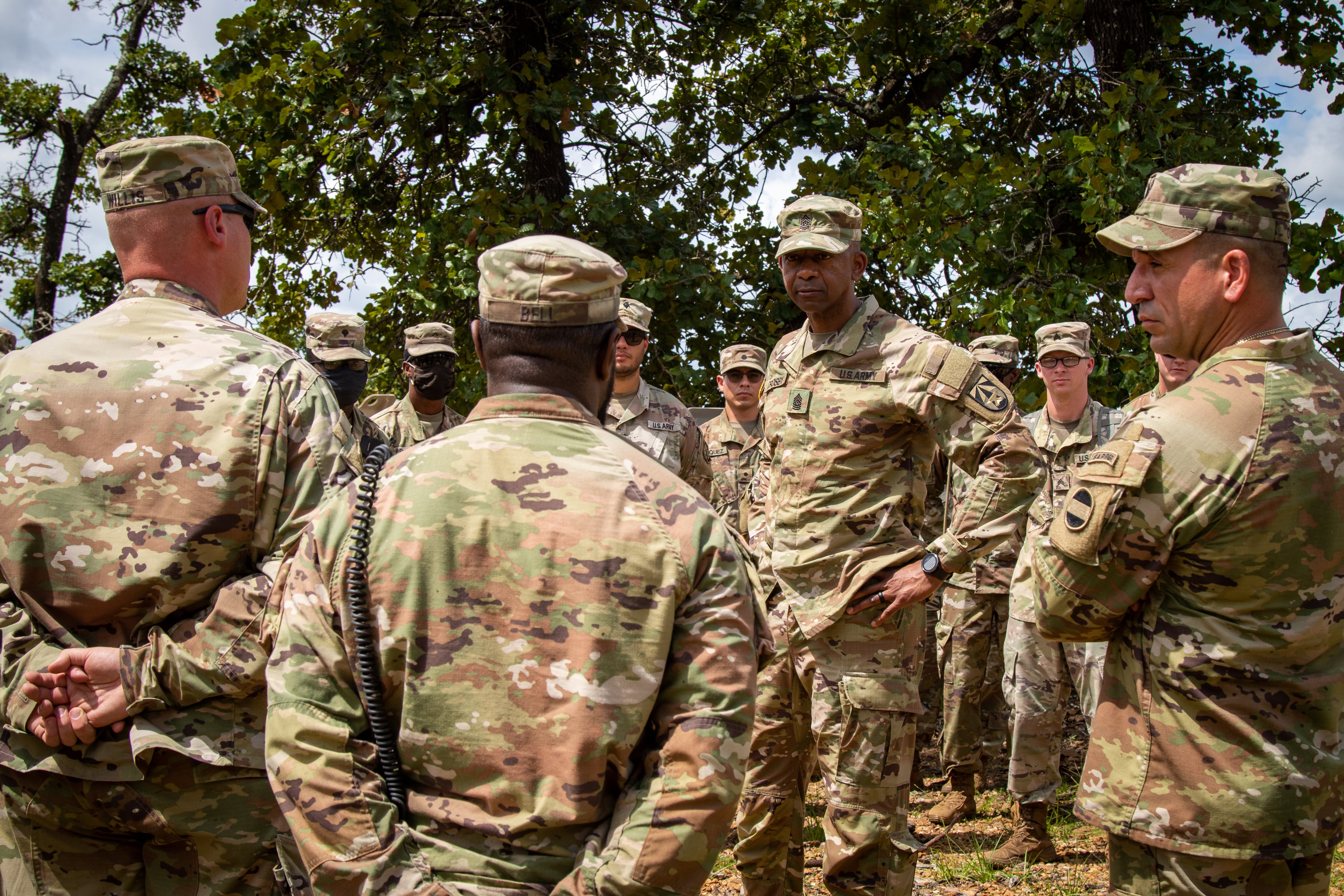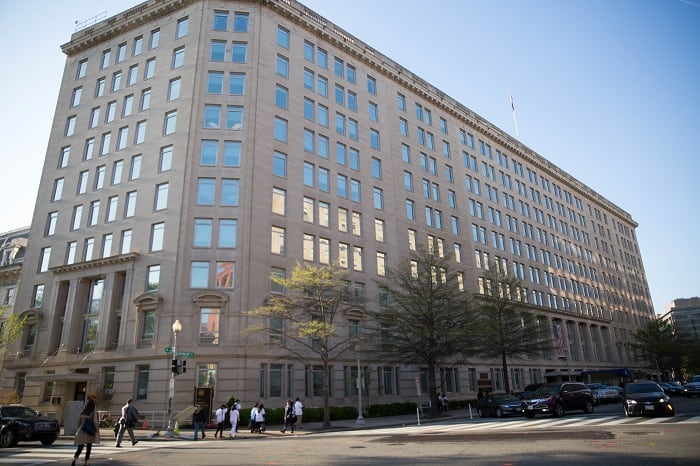Over the past few years, soldiers at Fort Polk, Louisiana, have ridden along as robots drove their vehicle convoys for a total of at least 2,000 unmanned miles.
The soldiers of the 41st Transportation Company have been testing the Army’s solution to manpower-draining and dangerous convoy operations — the Expedient Leader Follower program.
Maj. Benjamin Hormann, projects officer for ground vehicle robotics, spoke with the media during a September Combat Capabilities Development Command roundtable about the current status of the program.
The main objective for this early autonomous driving program has been to put the robots into supply or medium truck companies with a palletized loading system.
RELATED

The convoy isn’t entirely robotic. Typically, they run one manned vehicle and nine “follower” vehicles. Human soldiers are there to work through any problems that arise.
It’s not yet armed but could be one day. Until then, human soldiers provide security to their robot partners.
In a kind of invisible Pac-Man video game-like system, the leader vehicle drops electronic “pellets” or breadcrumbs that sensors on the follower vehicles “gobble up,” Hormann said.
The follower vehicles mimic what the lead vehicle does.
The system uses a drive-by-wire kit that allows for electronic control of the vehicle’s gas, brake and steering. The system can’t use hydraulic brakes or throttle, though, Hormann noted.
A long-haul convoy operation can sometimes last up to 17 hours. That’s a lot of driving and stress on the human drivers.
But with robots, Hormann said, the fleet can make more turns with the same vehicles because the trucks and the robots don’t need rest.

If an obstacle pops up, a downed vehicle, or even an ambush, the human driver can step in and take over, driving them around the obstacle and back onto the route.
The trucks have all the conveniences of modern driving tech — blind spot warnings, 360-degree cameras, electronic stability control and cruise control.
Ground Vehicle Systems Center Acting Director Alfred Grein said in an April release that by installing robotic kits to vehicles, a “manned” vehicle can lead a convoy of one or more follower “unmanned” vehicles accurately and safely.
“Now that the hardware is in place, we can look at ways to enhance the remote and semi-autonomous capabilities in the future,” Grein said. “All we have to do is update the software.”
Each month, soldiers with the 41st Transportation Company conduct a three- to five-day training mission and then provide the DEVCOMM staff with feedback.
As the program has moved along over the past few years, they’ve done modifications on the fly, evolving the hardware and software as needed, Hormann said.
Soldiers wanted to see grid lines on their teleoperation cameras for better situational awareness. Ninety days later, Hormann said, gridlines were in the camera view.
These soldiers are working with the Army’s largest robotic fleet, he said. There are 80 trucks kitted up for leader-follower. Sixty of those trucks are at Fort Polk with the 41st.
The kit that runs the flatbed tractor-trailer style trucks isn’t unique to that platform. Hormann said that the kit has been used on 21 vehicle platforms and can be adapted to them all.
Soldiers have been working with the kit on the Robotic Combat Vehicle program as well, the Army’s newest robot “wingman” for soldiers in the field.
But the soldiers can’t just take a road trip to Las Vegas on civilian roads and through towns. The trucks won’t stop at stop signs or make a left turn on their own. They do what the lead vehicle does and follow it as it goes.
Great for battlefield spaces, not so great for downtown Manhattan.
The next steps include hardening the system for more rugged operations and transferring it from an experiment and testing phase to a program that can be fielded to the rest of the Army fleet, Hormann said.
Todd South has written about crime, courts, government and the military for multiple publications since 2004 and was named a 2014 Pulitzer finalist for a co-written project on witness intimidation. Todd is a Marine veteran of the Iraq War.




